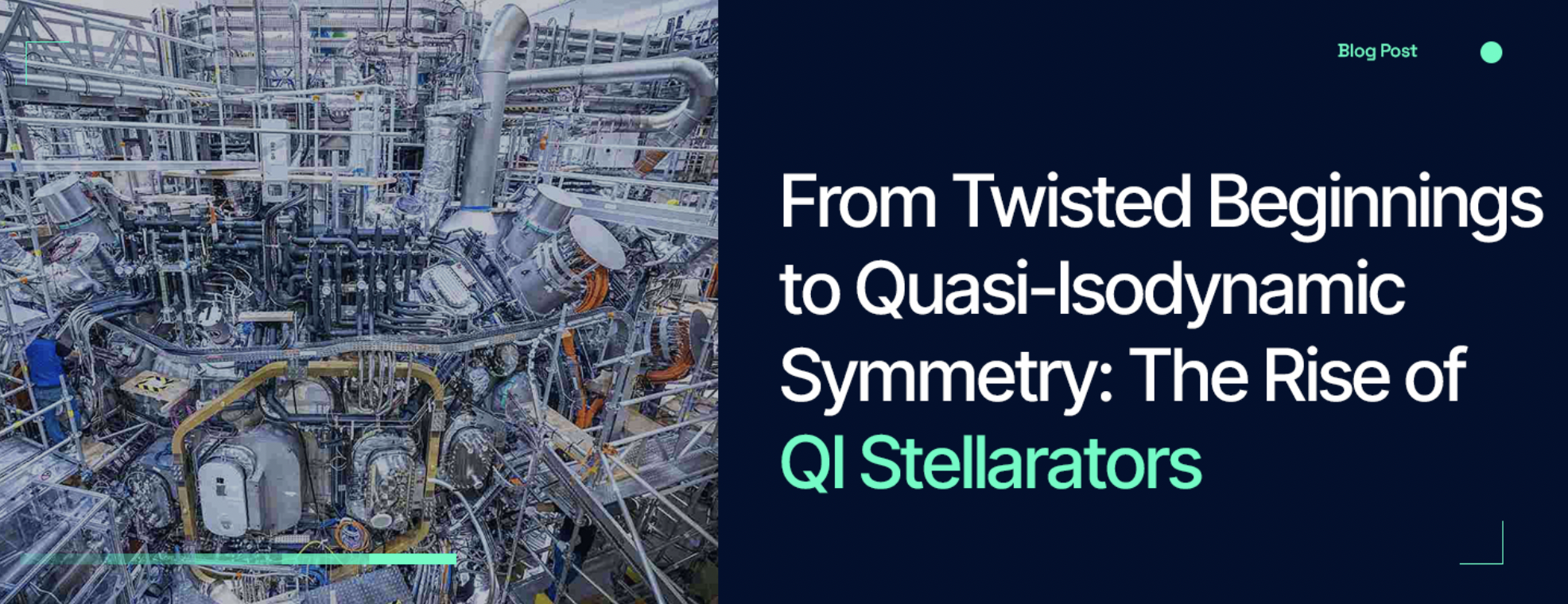
For decades, stellarators have been the twisted sibling of tokamaks in the race to unlock fusion energy. Where tokamaks rely on large plasma currents, stellarators use only external magnets to confine plasma – offering the promise of steady-state operation and inherent stability.
The stellarator story began in the early 1950s, when astrophysicist Lyman Spitzer proposed a toroidal magnetic confinement device with 3D helically winding field lines to harness the power of the stars. His early machines, starting with the Model A in 1953, proved plasma could be confined in such a torus. But performance was poor by modern standards, and by the 1960s, a new rival – the Soviet tokamak – was achieving far better confinement.
Many labs shifted focus, but a few groups, especially in Germany and Japan, kept the stellarator dream alive…
The Symmetry Breakthrough
In the 1960s, physicist Donato Palumbo introduced the term isodynamic for a type of magnetic fields that have no cross-field drift. His idea implied the elimination of banana orbits in toroidal confinement – but it later turned out to be pathological and unrealizable.
Others refined the concept: Hall & McNamara (1975), working in mirror research, defined omnigenity as the condition where bounce-averaged radial drifts vanish. This became the modern foundation for optimized stellarators.
A key advance came in 1983, when Allen Boozer developed a powerful mathematical framework for describing magnetic fields and particle drifts. His results implied that if the field strength exhibits a certain symmetry, stellarators could, in principle, confine particles as effectively as tokamaks.
But Boozer could not actually compute such fields; analytical theory alone wasn’t enough.
In 1988, Jürgen Nührenberg and Regine Zille at the Max Planck Institute for Plasma Physics (IPP) achieved a breakthrough: they demonstrated numerically that one could construct realizable stellarator configurations with quasi-helical symmetry in the magnetic field strength. This discovery of “hidden symmetry” – quasi-symmetry – implied that stellarators could be designed to drastically reduce particle losses without looking symmetric to the eye.
Their design inspired the Helically Symmetric Experiment (HSX) in Wisconsin, which began operation in 1999 and confirmed quasi-helical (QH) stellarators in experiments.
By the mid-1990s, two other symmetry classes of optimized stellarators joined the family:
Each class offers a clever way to reduce drifts and energy losses in a non-axisymmetric torus by making the magnetic field omnigenous, but today one such way in particular stands out on the path to commercial fusion power.
Wendelstein and the QI Path
Experimental stellarators were also evolving in parallel.
The Wendelstein 7-AS (W7-AS) device, operated in Garching from 1988–2002, was not explicitly designed for symmetry optimization, but its numerical optimization minimized bootstrap current and radial drifts – in effect, exploring some of the same physics that later became associated with QI. W7-AS also pioneered modular coil technology, a concept first realized in Madison in the 1980s.
Its successor, the Wendelstein 7-X (W7-X) stellarator in Greifswald, was approved in 1994 – before the word “QI” was formally introduced. While its design was not explicitly quasi-isodynamic, its aim was to approach omnigeneity, laying the groundwork for future devices.
By the late 2000s, new theoretical insights clarified the promise of QI. Work by Per Helander and co-workers (including Jürgen Nührenberg, Gabriel Plunk and Josefine Proll) showed that perfectly QI devices exhibit zero bootstrap current and can realize the “maximum-J” property – beneficial for both macroscopic (MHD) and microscopic (gyrokinetic) plasma stability. This was something QA and QH couldn’t achieve.
When W7-X began operation in 2015, it set out to demonstrate that optimized stellarators could achieve confinement rivaling tokamaks, but without the need for large toroidal plasma currents. In 2022, W7-X met its first energy confinement targets – a landmark in confirming that theory and engineering could deliver on decades of stellarator physics.
Modern Advances: Perfecting Hidden Symmetry
The past few years have seen rapid-fire breakthroughs push stellarator design even further.
The drawbacks of W7-X have now been overcome in design – for the first time, there is a clear path to a QI stellarator power plant.
A Bright Future
From Spitzer’s figure-eight coils to today’s highly optimized QI configurations, stellarators have gone from underdog to frontrunner in fusion energy.
The combination of steady-state operation, passive stability, and now high-performance plasma confinement makes the QI stellarator the most promising path to commercial fusion power.
This is the foundation we’re building on here at Proxima. Together with our partners, we’re leveraging decades of theory, experimental validation, and cutting-edge design tools to build the first-ever stellarator fusion power plant.